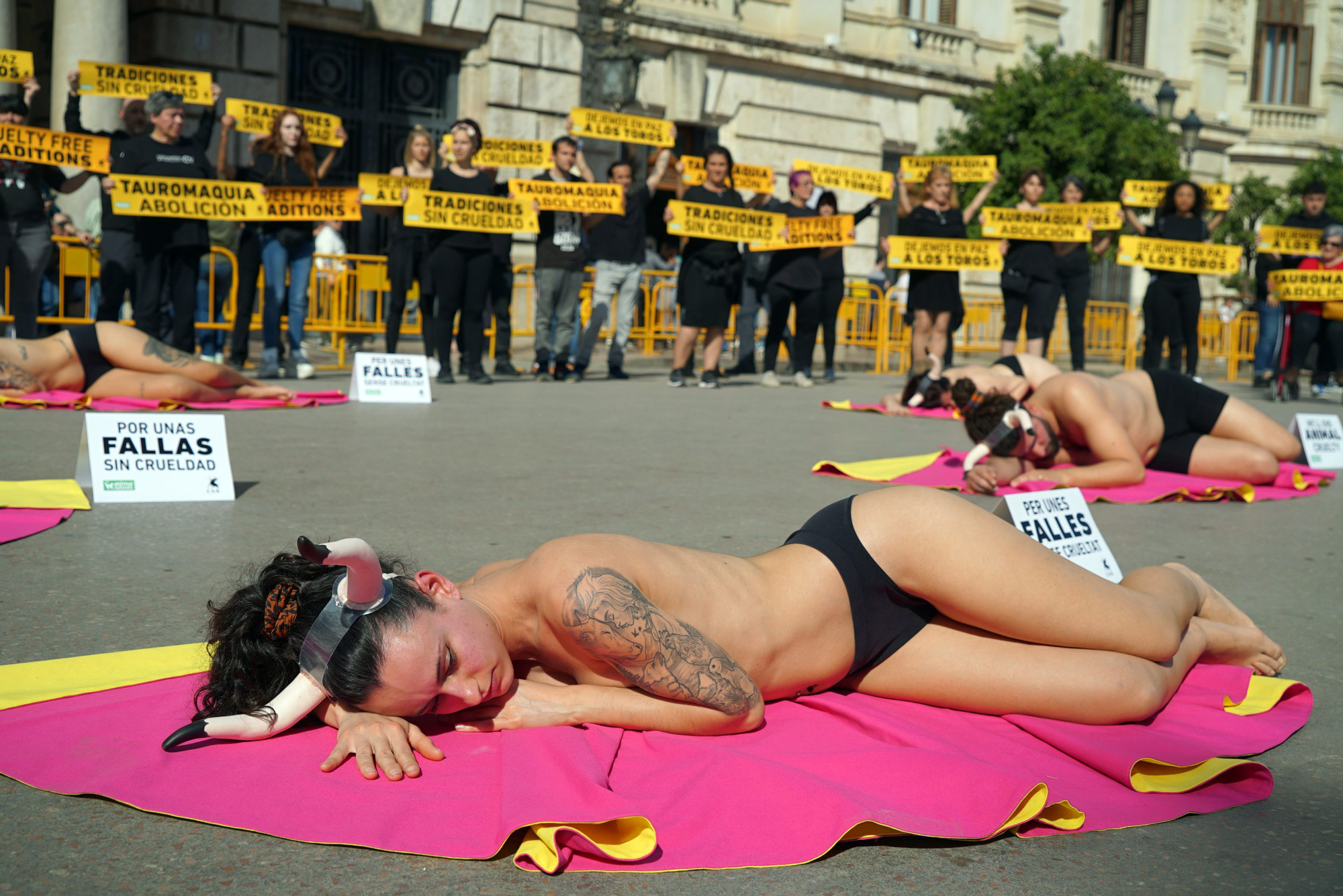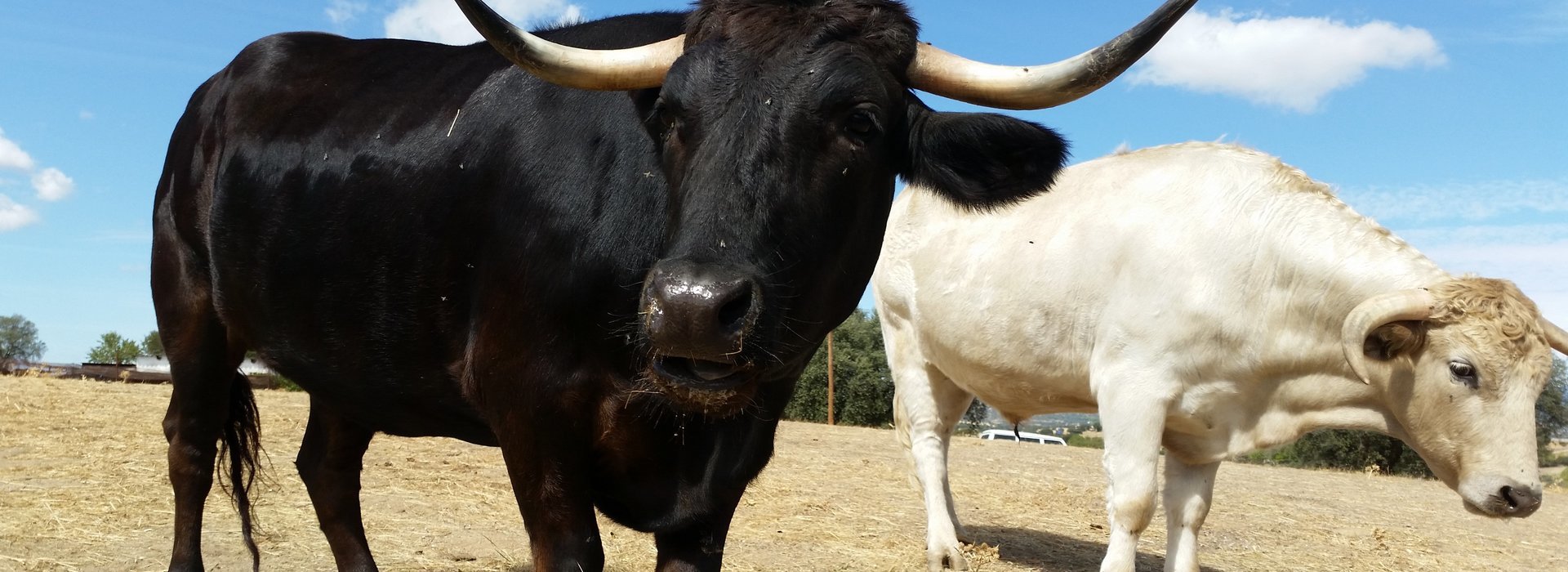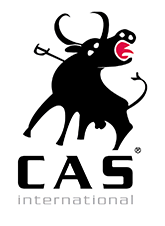Protest in Valencia against bullfighting
30-03-2023On March 12, CAS International and AnimaNaturalis protested against bullfights in the Spanish city of Valencia. These were held during Fallas, a traditional festival that takes place annually in Valencia.

Protest in Valencia against bullfighting | @ CAS International/AnimaNaturalis
The protest was held in front of the city hall of Valencia. Activists were lying on the ground, on a capote. The capote is an important part of the bullfight: it is a pink cloth that the bullfighter uses to lure the bull toward him. Then, the animal runs after the capote. The purpose of this is to tire and weaken the bull, which reduces the chances that the animal can injure the bullfighter.
The activists were half-naked on the capote in order to “get into the bull’s skin”. Behind them were activists with banners.
In the end, the bullfighters killed 60 bulls in eight days during the Fallas festivities.
Fallas
The Fallas basically have nothing to do with animal suffering: statues made of wood and papier-mâché play an important role in this week-long celebration. At the end of the festivities, people set the statues on fire. Bullfights are held during the Fallas, but essentially have nothing to do with the fiesta. Estefania Pampin Zuidmeer, vice president & secretary of CAS, grew up in the state of Valencia and is familiar with the Fallas:
“The Fallas are a symbol of creativity and imagination. The papier-mâché sculptures are gracious and intended to make the public laugh or make them think. The bullfights, on the other hand, are a symbol of death. The bullfighter has to dominate and master an innocent animal with various instruments of torture. The contrast could not be greater. The bullfights give the Fallas a thick, black edge.”
Varias personas se desnudan en la Plaza del Ayuntamiento de Valencia para protestar contra la temporada taurina de Fallas: "Tauromaquia demolición" https://t.co/5dP0ucpbz8 pic.twitter.com/vUAF9X4IlH
— Europa Press (@europapress) March 12, 2023
Lack of interest
In 2022, bullfighting returned to Spain after two years of pandemic. For the entrepreneurs who organize bullfights, attendance numbers were hugely disappointing. In Madrid, during the San Isidro festivities, they lost 100,000 euros in revenue. In Bilbao (during Aste Nagusia) and Logroño (during San Mateo), the bullrings were not even filled to a third of their capacity.
According to official data from Spain’s Ministry of Culture, there has been a sharp decline in the number of bullfights since 2015. Only 8 percent of Spaniards went to a bullfight between 2018-2019. In addition, we know then in 2018 90.5 percent of Spaniards did not attend a bullfight.
Even though more than 90 percent of Spaniards do not go to bullfights, more than 9,000 bulls will die this year. More than 50,000 bulls will be rented and exploited during bull festivals.
80 percent of Spain’s spectacles with bulls take place in the regions of Madrid, Toledo, Salamanca, Ávila and Cuenca. In three states, bullfighting is banned or has disappeared: Catalonia, the Canary Islands and the Balearic Islands.
Support us so we can continue our impactful campaigns! Become a sponsor or make a donation.









